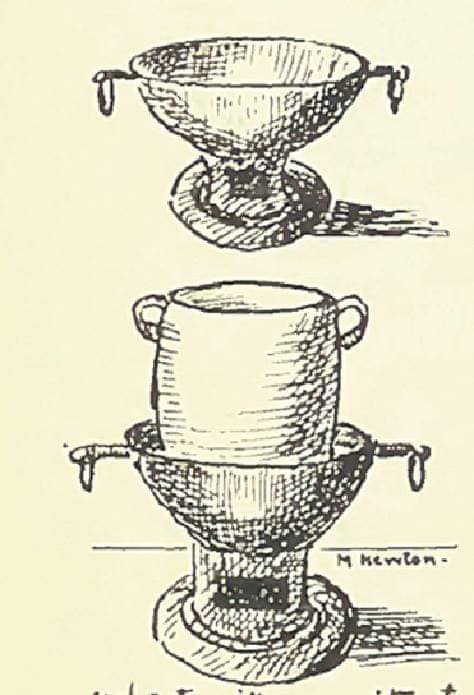 The coalpot and canaree were once fixtures of every kitchen, large and small, rich and poor from at least the 18th century right up until proper gas stoves and cylinders became available after the 1950s. The coalpot is pretty straightforward. Nowadays they are manufactured locally from alight, durable pot-metal alloy but still are pretty authentic in shape. The original examples however (and these have now become prized antiques to those who have them), were of cast iron. The earliest form was imported from foundries in England and sported two iron rings on either end which marginally isolated the cook from the heat when having to move the pot whilst still filled with burning coals. There are few who would argue with me when I assert that a meal cooked on a coalpot in the proper old fashioned way is far more flavourful than anything prepared on a modern range.The portable nature of the coalpot made it useful for families who lived in confined spaces like the barrackyards around Port of Spain or in the barrack-ranges on the sugar plantations. A simple one-pot dish could be prepared in short order which usually combined rice with some type of legume (red beans, black-eyed peas, dhal etc.) or greens like ochroes or bhagi. Many of these frugal-yet-tasty one-pot collations have remained fixtures of the national palate. The Canaree on the other hand is infinitely older. The first indigenous pottery-making cultures arrived in Trinidad around 250 BC. Classed as Saladoid because of the typing of their ceramics at Saladero in Venezuela, these first peoples supplanted an earlier hunter-gatherer set which had persevered since 6,000 B.C. The canaree or stewpot was used for the cooking of pepperpot which was a melange of vegetables, meat and spices . Key to the pepperpot was cassareep which is the juice of the poisonous bitter cassava, squeezed out using a basketwork tube known as a couleve and rendered harmless by boiling and adding red capsicum peppers. Cassareep has preservative properties so that as long as the pepperpot was kept boiling over a slow fire, it could be sustained indefinitely by adding fresh cassareep and ingredients. This characteristic made it invaluable to early settlers who had more pressing issues to occupy their time than just cooking meals. Even in the poorest of households, the pepperpot had a place since it freed the housewife to attend to other domestic affairs. The great-houses on the sugar and cocoa plantations of the ruling planter elites kept a pepperpot bubbling at all times in a huge canaree. In an era when roads were unmade tracks and travellers could be stranded in the rainy season since most rivers were unbridged, the pepperpot was an easy way to provide a hot meal when served up with boiled rice or ground provisions. Some more magnanimous grand folk like Robert Guppy –a 19th century Mayor of San Fernando- kept an open table in a back veranda of their homes where poor persons (usually old retainers of the household who had outlived their productive years and were near vagrancy) could sit and have a dish of pepperpot. The Canarees of the 19th and early 20th centuries were most often rough, fired earthenware, imported from Barbados and manufactured near the clay pits near Chalky Mount. Some were locally made by Indian potters but these were considered to be of inferior strength and not able to take constant heat over the years. By far the most legendary pepperpot in the island was the one at Woodbrook Estate which was a sugar plantation from the 1780s right up to 1899 when it was sold and laid out in small building lots. The estate house, which stood where Woodbrook Fire Station is now, was a simple wooden structure and in its last days, was inhabited by a ruddy, loud Scottish manager named Watson. In the detached kitchen, a massive canaree, blackened by age and flame, bubbled over a slow fire. The Woodbrook Pepperpot in the 1890s was rumoured to be over 100 years old and was rated for its fine flavour , no doubt because all the original ingredients had long since disintegrated into a spicy broth. The Woodbrook pepperpot was outdone by the Diamond Estate pepperpot of Demerara in British Guiana which in the same period was already said to be near two centuries old. That must have been a flavorful dish indeed! Although popular in Guyana, the pepperpot is now rarely tasted in Trinidad, yet it continues to be part of our earliest culinary roots.
0 Comments
Leave a Reply. |
T&T news blogThe intent of this blog is to bring some news from home and other fun items. If you enjoy what you read, please leave us a comment.. Archives
July 2025
Categories
All
|



 RSS Feed
RSS Feed